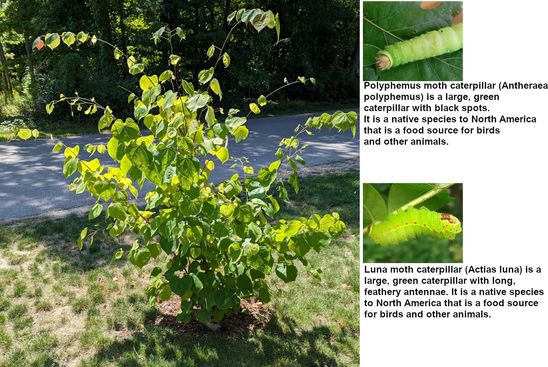Elk Rapids Almanac - August 2023
August 5
“Heat tourists” from around the world are flocking to Death Valley National Park, which boasts “hottest place on Earth”. Visitors like to pose in front of the digital thermometer, which on July 16 showed 132 F/55 C (which runs hotter than the official temperature). Highest official temperature this year is 128 F. On days the temperature hits 120 degrees, National Park Service employees are only allowed to work outside for 10 minutes every hour, and only if it’s necessary. _ Wall Street Journal, August 5-6, 2023.
“Heat tourists” from around the world are flocking to Death Valley National Park, which boasts “hottest place on Earth”. Visitors like to pose in front of the digital thermometer, which on July 16 showed 132 F/55 C (which runs hotter than the official temperature). Highest official temperature this year is 128 F. On days the temperature hits 120 degrees, National Park Service employees are only allowed to work outside for 10 minutes every hour, and only if it’s necessary. _ Wall Street Journal, August 5-6, 2023.
|
August 18
In a landmark climate case, a U.S. District Court in Montana has ruled in favor of a group of 16 Montana youths. The court found that young people have a constitutional right to a healthful environment and that the state must consider potential climate damage when approving projects. A court challenge by the state of Montana is anticipated. There are currently youth climate lawsuits in Utah, Virginia, and Oregon. _NPR.org |

Rikki Held, 22, arrives for the United States' first youth climate-change trial at Montana's 1st Judicial District Court in Helena, Mont., on June 12. She was one of 16 young plaintiffs, ages 5 to 22, who sued the state for promoting fossil fuel energy policies that they say violate their constitutional right to a "clean and healthful environment."
William Campbell/Getty Images
|
August 25
The topic of PFAS is a much discussed and little understood topic in Michigan and elsewhere, so we consulted FLOW (For Love of Water, a regional water policy group) for a summary:
A group of chemicals known as PFAS have become a major environmental and human health concern. PFAS have been used in the manufacture of many consumer products, including nonstick pans and water-repellent clothing, and in firefighting foam. PFAS are called "forever chemicals" because they break down extremely slowly in the environment. PFAS are widespread in Michigan in everything from old landfills to sportfish and in some drinking water supplies. They have been linked to certain cancers, reproductive system effects, low birthweight. and more. The best way to protect yourself and the environment is to learn which household products contain PFAS and avoid them, and to support legislation that would target PFAS for elimination in many products. See Michigan.gov/pfasresponse _Dave Dempsey, senior advisor, FLOW
The topic of PFAS is a much discussed and little understood topic in Michigan and elsewhere, so we consulted FLOW (For Love of Water, a regional water policy group) for a summary:
A group of chemicals known as PFAS have become a major environmental and human health concern. PFAS have been used in the manufacture of many consumer products, including nonstick pans and water-repellent clothing, and in firefighting foam. PFAS are called "forever chemicals" because they break down extremely slowly in the environment. PFAS are widespread in Michigan in everything from old landfills to sportfish and in some drinking water supplies. They have been linked to certain cancers, reproductive system effects, low birthweight. and more. The best way to protect yourself and the environment is to learn which household products contain PFAS and avoid them, and to support legislation that would target PFAS for elimination in many products. See Michigan.gov/pfasresponse _Dave Dempsey, senior advisor, FLOW
August 28
Inspired by Doug Tallamy, I am looking for opportunities to nurture native plants in my home landscape so I was delighted to discover a baby Redbud tree growing in an area I let go somewhat wild (keeping invasives out).
Redbud trees are native to North America. They have striking bright pink blooms in the spring. I transplanted this little guy to the front yard where it is getting established in an area with lots of sun. I hope to find some plump caterpillars munching on it in the near future to sustain baby birds. The two caterpillars below only feed on certain trees and Redbud is one of them. PS - Please let Green ER know if you have more information about redbuds and their beneficial insects for us to share _Julie Farrell.
Inspired by Doug Tallamy, I am looking for opportunities to nurture native plants in my home landscape so I was delighted to discover a baby Redbud tree growing in an area I let go somewhat wild (keeping invasives out).
Redbud trees are native to North America. They have striking bright pink blooms in the spring. I transplanted this little guy to the front yard where it is getting established in an area with lots of sun. I hope to find some plump caterpillars munching on it in the near future to sustain baby birds. The two caterpillars below only feed on certain trees and Redbud is one of them. PS - Please let Green ER know if you have more information about redbuds and their beneficial insects for us to share _Julie Farrell.


